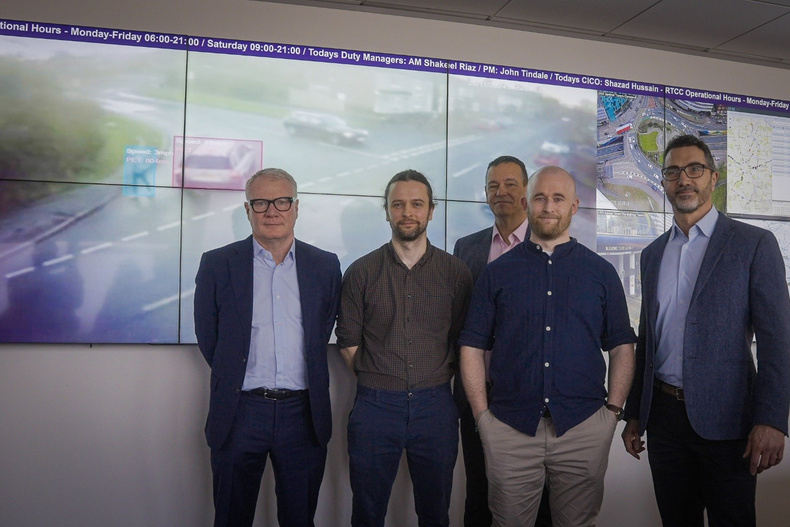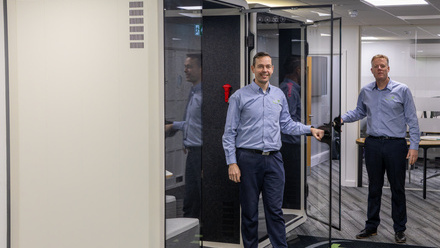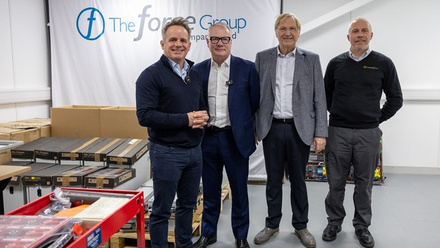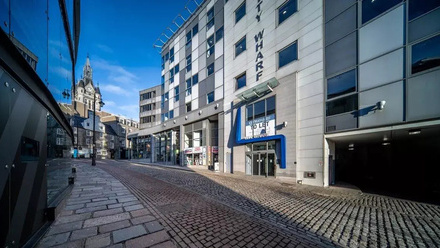‘Near miss’ AI technology reveals road safety risks across West Midlands

Near misses between drivers and pedestrians are being detected using the latest artificial intelligence (AI) technology as part of a region wide pilot scheme to improve safety and save lives.
VivaCity’s AI-powered vision sensors detect and record near misses, such as when a vehicle passes within inches of a slower moving pedestrian or cyclist, so that potential collision hot spots can be identified before someone is actually hurt.
A total of 40 existing sensors across the region have been upgraded with the Smart Road Safety and Near Miss technology, which uses object speed and path data to estimate collision risks between road users.
The analysis provided by the award-winning technology is being used by Transport for West Midlands (TfWM) and VivaCity to determine where safety measures are needed.
Until now, highway planners have had to use data from collisions that have already happened when deciding where to install safe crossings or speed reduction measures.
West Midlands mayor Richard Parker said: “One life lost on our roads is one too many. That’s why I’m committed to Vision Zero – no more deaths on our roads.
“We need to use every tool available to make journeys safer for everyone in the West Midlands.
“This new AI technology is helping us prevent collisions before they happen, protecting pedestrians, cyclists, and drivers. And Coventry is leading the way as the first place to roll out measures that have been guided by high-tech AI.”
Latest provisional figures show that while road deaths in the West Midlands have fallen by 12 per cent over the last two years, 43 per cent of all fatalities were pedestrians, highlighting the need for further measures to protect vulnerable road users.
Mat MacDonald, the region’s Road Safety Commissioner, said: “Instead of waiting for tragedy to unfold we will be able to allocate resources in a way that reduces the chance of a collision occurring in the first place.
“Acting pre-emptively at danger hotspots to tackle speeds, reduce the volume of traffic and improve physical protections for the most vulnerable road users will without doubt reduce deaths and serious injuries in collisions, which must be our overarching focus.”
The AI near-miss sensors build on the Regional Road Safety Action Plan’s broader crackdown on dangerous driving, complementing other actions such as additional funding for extra staff to review speed cameras and dashcam footage.
One local highway authority using the analysis to guide its road safety work is Coventry City Council. It is set to install a pedestrian refuge on Grange Road in Coventry after several near misses were recorded by the AI technology.
The project has already won the DfT’s Special Recognition Award in the ‘Best Use of Technology in the Highways and Transportation Sector’ category last October, as well as in the 'Better Safety Through Technology' and overall 'Best Project of the Year' categories at the ITS UK Awards 2024. It has also been nominated for the prestigious 'International Road Safety Invention & Innovation Competition,' which will be held in Morocco, later this month.
Only last month the UK government launched an AI action plan to ramp up the adoption of the technology across the UK to boost economic growth, provide jobs for the future and improve people's everyday lives.
Pictured (L-R): Mayor Richard Parker (left) with Road Safety Commissioner Mat MacDonald, Darren Divall, Road Safety manager for TfWM and VivaCity partners Shane Foley and Rob Stait at the Road Traffic Control Centre (RTCC) where a demonstration of how the technology works in action took place



